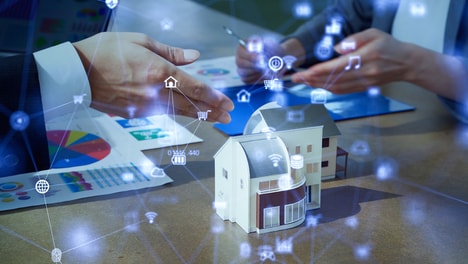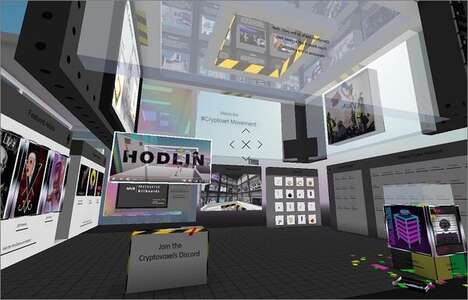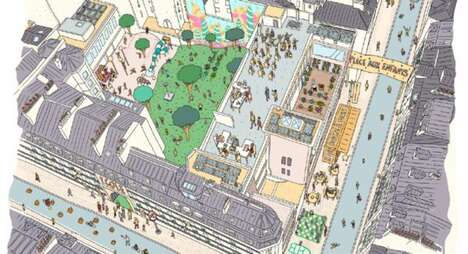Rethinking Value Beyond Bricks and Mortar
Related Trend Reports
Art & Design, Business, Design, Home, Lifestyle, Marketing, Multimedia, New Ventures
The urban landscape is undergoing a profound transformation as cities worldwide embrace "smart" technologies that promise to revolutionize how we live, work, and interact with our built environment. This tech-driven evolution is reshaping not just how properties are developed and managed, but fundamentally altering their value proposition in ways that will define real estate markets for decades to come.
The Digital Nervous System of Smart Cities
At the heart of smart city real estate is what industry experts call a "digital nervous system" - an interconnected network of sensors, data platforms, and automated systems that continuously monitor and respond to changing conditions. This nervous system extends from individual buildings to encompass entire urban ecosystems, creating responsive environments that optimize resource use and enhance quality of life.
The foundation of this system is the Internet of Things (IoT) - ubiquitous sensors that collect real-time data on everything from energy consumption and occupancy patterns to air quality and parking availability. For example, IoT-enabled systems in smart buildings monitor energy and security in real time, adapting to occupants' needs while improving efficiency. At the city level, Barcelona's extensive sensor network measures parking occupancy, controls park irrigation to save water, monitors air quality, and even alerts when trash bins require emptying.
These vast data streams would be overwhelming without the artificial intelligence (AI) systems that transform raw information into actionable insights. AI-driven management systems learn usage patterns and optimize building operations - adjusting ventilation or lighting to reduce energy waste while maintaining comfort. City planners harness AI to analyze urban data and improve decision-making, enabling proactive interventions before problems arise.
Perhaps most revolutionary is the emergence of digital twins - virtual replicas of physical assets synchronized with real-world data. Singapore's government created Virtual Singapore, a high-resolution 3D digital twin of the entire city that integrates live data on buildings, infrastructure, and population movement. This platform allows planners to simulate various scenarios before implementation, optimizing solutions for maximum effectiveness.
The Sustainability Imperative
Smart city development isn't solely focused on digital technology - sustainability forms an equally important pillar of this urban revolution. Smart buildings incorporate energy-efficient designs, renewable energy systems, superior insulation, and water-saving fixtures, often enhanced by IoT sensors and AI algorithms that continuously optimize resource usage.
Barcelona's smart irrigation system exemplifies this approach, using soil moisture sensors and weather data to water parks only as needed, saving over 25% in water consumption. Similarly, the city's smart lighting initiatives have reduced energy usage by approximately 30%, demonstrating significant environmental and economic benefits.
The integration of green infrastructure extends beyond individual buildings to encompass entire neighborhoods. New York's Hudson Yards development features an on-site cogeneration plant and microgrid for more efficient and sustainable power generation. Properties connected to such infrastructure enjoy more reliable and cleaner energy - attributes increasingly valued by tenants and investors focused on resilience.
The "Smart Premium" in Real Estate Values
The impact of smart city technologies on property values is becoming increasingly evident. Studies show that property values in smart cities often surpass those in traditional urban areas, as buyers and tenants willingly pay a premium for the benefits of a connected, sustainable environment.
Singapore's aggressive smart city investments - including an estimated $43.5 billion in sustainable infrastructure - have significantly bolstered its real estate market. The combination of smart housing, efficient transportation, and green buildings has made the city-state one of the world's most desirable locations for both living and investment.
This "smart premium" materializes as higher rents, increased property values, and lower vacancy rates in districts known for smart city features. Properties with intelligent features can command higher prices due to their enhanced performance and connection to surrounding smart city services.
Operating costs also play a crucial role in this equation. Smart building technologies can reduce building operating expenses by up to 35% through energy savings, predictive maintenance, and optimized resource use - simultaneously improving tenant comfort and satisfaction. These efficiency gains directly enhance property values by increasing net operating income.
Reimagining Urban Planning
Smart city principles are fundamentally changing urban planning approaches. Data-informed planning relies on real-time information and predictive models, with digital twins allowing planners to test scenarios virtually before physical implementation. This reduces costly mistakes and ensures new developments integrate seamlessly with existing city systems.
The "15-minute city" concept - where daily necessities are within a short walk or bike ride - is gaining traction, supported by smart mobility solutions and real-time transit information. Mixed-use developments with residential, commercial, and public spaces are increasingly the norm as planners seek to create more efficient, livable neighborhoods.
Infrastructure itself is becoming intelligent, with smart traffic systems managing congestion through adaptive signaling and smart utilities allowing cities to manage growth without straining resources. Urban resilience is also a growing focus, with smart planning tools helping simulate disaster scenarios to improve emergency planning and building codes.
Balancing Innovation and Public Interest
The rapid advancement of smart cities brings significant policy challenges. Data privacy and security are paramount concerns, as smart buildings and cities generate vast amounts of potentially sensitive information. Policymakers are developing frameworks to ensure data is anonymized and secured, with clear guidelines on what information can be collected and how it's used.
Interoperability and standards pose another challenge. With numerous vendors and systems in play, there's a risk of fragmentation. Governments and industry bodies are pushing for open standards and interoperability requirements, ensuring systems can communicate effectively across platforms.
Building codes and zoning regulations are evolving to accommodate smart technologies, with some cities creating special incentives for smart city innovation districts. Environmental regulations are also driving adoption, with policies like New York City's Local Law 97 effectively requiring landlords to implement smart energy management to avoid penalties for excessive emissions.
Perhaps most important is ensuring equity in smart city benefits. If smart features are limited to luxury developments or wealthy districts, urban inequalities could worsen. Forward-thinking policies direct smart infrastructure investments to underserved neighborhoods, ensuring all communities benefit from improved services and rising property values.
Opportunities and Challenges for Developers and Investors
For real estate developers and investors, smart cities present tremendous opportunities. Beyond higher property values and stronger demand, smart building technologies offer operational efficiencies that improve bottom-line performance. Developers who embrace smart city concepts can differentiate their projects in competitive markets, attracting premium tenants and buyers.
However, these opportunities come with significant challenges. Implementing advanced technologies increases upfront costs, potentially requiring new financing models or partnerships. The technical complexity of smart systems demands specialized expertise that many traditional real estate organizations lack. Regulatory compliance becomes more complex as laws evolve around data privacy, cybersecurity, and sustainability.
Public acceptance remains another hurdle, with potential resistance to technologies perceived as intrusive or surveillance-oriented. Developers must be transparent about the technologies deployed in their projects and clearly communicate the benefits to residents.
Despite these challenges, the trajectory of urban development clearly favors smarter, more sustainable projects. Those who adapt early - investing in expertise, forging partnerships with technology providers, and working closely with city officials - are positioned to lead this transformation and capture the considerable value it creates.
The Path Forward
Smart cities represent a fundamental reimagining of urban environments and the properties within them. As illustrated by pioneers like Singapore, Dubai, Barcelona, and New York, the future city integrates physical infrastructure with digital networks and green systems to create responsive urban ecosystems that enhance quality of life while optimizing resource use.
For real estate stakeholders, success in this new landscape requires embracing both technological innovation and sustainability. Properties that excel in both dimensions will command premium values, attract desirable tenants, and demonstrate resilience in changing markets.
The smart city revolution is not merely changing how we build - it's transforming how we experience urban life. By leveraging technology to create more efficient, sustainable, and livable environments, smart cities are defining the future of real estate and reshaping the very concept of value in urban property markets.
For more industry insights, check out Trend Hunter's free 2025 Trend Report.


